#richard bolland
Explore tagged Tumblr posts
Text
Continuing Doom Patrol month with Rita Farr, Elasti-Girl!





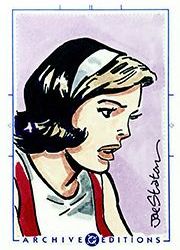
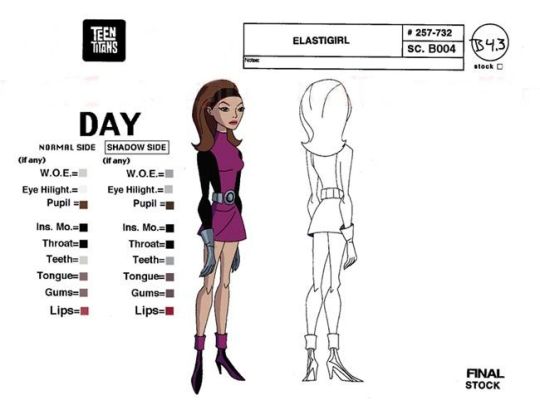
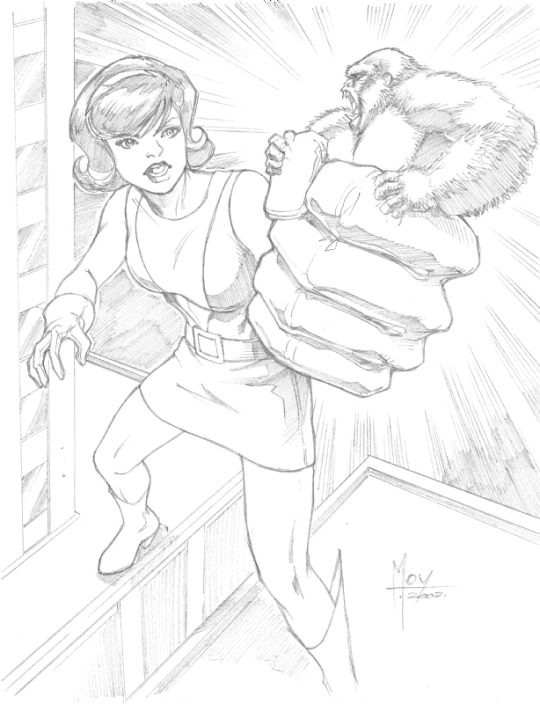
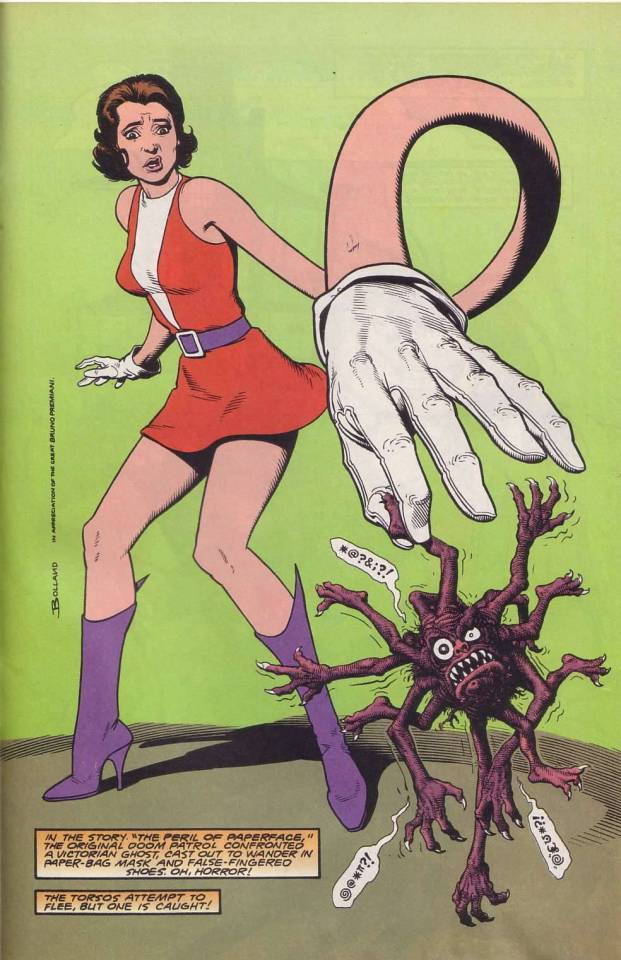

#dc comics#elasti girl#rita farr#richard case#jeff moy#ron frenz#joe staton#ramona fradon#cliff chiang#glen murakami#john byrne#brian bolland#john watson
37 notes
·
View notes
Text




1988's Batman: The Killing Joke cover by Brian Bolland and Richard Bruning.
#Joker#Brian Bolland#Batman: The Killing Joke#Batman#The Killing Joke#Jack Napier#comics#cover#DC#dc comics#1988#Alan Moore#origin story#The Joker#process#cool cover art#say cheese#DC Comic of the 1980s#post Crisis#cool comic art#art#80s#80's#gotham#sinister#super villain#clown#greatest joker stories ever told#80s comics#The Killing Joke by Alan Moore and Brian Bolland
17 notes
·
View notes
Text
The Folio Society to Publish "DC: Batman" Celebrating Batman's 85th Anniversary

The Folio Society and DC Comics are partnering on DC: Batman, a hardback book celebrating the Dark Knight's 85th anniversary. The 320-page deluxe compilation will include 12 seminal comics all selected and introduced by DC President, Publisher, and Editor-in-Chief Jennette Kahn. DC: Batman will also come with stand-alone replica copy of Batman #1, "scanned in its entirety from an original 1940 copy...which includes the original back-up strips and vintage ads and introduces DC’s Clown Prince of Crime, aka The Joker, and The Cat, who would come to be known as Catwoman." (DC Comics)
Per DC Comics, DC: Batman includes:
"Facsimile: Batman #1 (Spring 1940) Writer: Bill Finger Cover artists: Bob Kane, Jerry Robinson Artists: Bob Kane, Sheldon Moldoff Editor: Whitney Ellsworth
The Bat-Man Detective Comics #27 (May 1939) Writer: Bill Finger Artist: Bob Kane Editor: Vincent Sullivan
Robin—the Boy Wonder Detective Comics #38 (April 1940) Writer: Bill Finger Artists: Bob Kane, Jerry Robinson Editor: Whitney Ellsworth
The Crimes of Two-Face! Detective Comics #66 (August 1942) Writer: Bill Finger Artists: Jerry Robinson, George Roussos Letterers: Ira Schnapp Editor: Whitney Ellsworth
Batman and Green Arrow: The Senator’s Been Shot! The Brave and the Bold #85 (September 1969) Writer: Bob Haney Cover artist: Neal Adams Penciler: Neal Adams Inker: Dick Giordano Letterer: Ben Oda Editor: Murray Boltinoff
Daughter of the Demon Batman #232 (June 1971) Writer: Dennis O'Neil Cover artist: Neal Adams Penciler: Neal Adams Inker: Dick Giordano Letterer: John Costanza Editor: Julius Schwartz
The Dead Yet Live Detective Comics #471 (August 1977) Writer: Steve Englehart Cover artists: Marshall Rogers, Terry Austin, Tatjana Wood, Gaspar Saladino Penciler: Marshall Rogers Inker: Terry Austin Colorists: Marshall Rogers Letterer: John Workman Editors: Julius Schwartz, E. Nelson Bridwell
The Dark Knight Returns Batman: The Dark Knight Returns #1 (June 1986) Writer: Frank Miller Cover artists: Frank Miller, Lynn Varley Penciler: Frank Miller Inker: Klaus Janson Colorist: Lynn Varley Letterer: John Costanza Editors: Dick Giordano, Dennis O'Neil
Batman: Year One—Chapter One: Who I Am—How I Come to Be Batman #404 (February 1987) Writer: Frank Miller Artist: Dave Mazzucchelli Colorist: Richmond Lewis Letterer: Todd Klein Editor: Dennis O'Neil
Batman: The Killing Joke (July 1988) Writer: Alan Moore Cover artists: Brian Bolland, Richard Bruning Artist: Brian Bolland Colorist: John Higgins Letterer: Richard Starkings Editors: Dennis O'Neil, Dan Raspler
The Last Arkham (Part One) Batman: Shadow of the Bat #1 (June 1992) Writer: Alan Grant Cover artist: Brian Stelfreeze Penciler: Norm Breyfogle Inker: Norm Breyfogle Colorist: Adrienne Roy Letterer: Todd Klein Editors: Scott Peterson, Dennis O'Neil
Knightfall Part 1: Crossed Eyes and Dotty Teas Batman #492 (May 1993) Writer: Doug Moench Cover artists: Kelley Jones, Bob LeRose Penciler: Norm Breyfogle Inker: Norm Breyfogle Colorist Adrienne Roy Letterer: Richard Starkings Editors: Scott Peterson, Jordan B. Gorfinkel, Dennis O'Neil"
DC: Batman is available at The Folio Society.
(Image via DC Comics)
3 notes
·
View notes
Text

Heroes for Hope Starring the X-Men
Volume: 1
Issue: 1
Heroes for Hope
Writer: Chris Claremont, Ann Nocenti, Jim Starlin, Jim Shooter, Stan Lee, Ed Bryant, Louise Simonson, Stephen King, Bill Mantlo, Alan Moore, Harlan Ellison, Jo Duffy, Mike Baron, Denny O'Neil, George R.R. Martin, Bruce Jones, Steve Englehart, Mike Grell, Archie Goodwin, Bernie Wrightson
Penciler: John Romita Jr, John Buscema, Brent Anderson, John Byrne, Bernie Wrightson, Charles Vess, Richard Corben, Mike Kaluta, Frank Miller, Brian Bolland, John Bolton, Steve Rude, Bret Blevins, Herb Trimpe, Gray Morrow, Paul Gulacy, Alan Weiss, Jackson Guice, Howard Chaykin
Inker: Al Gordon, Klaus Janson, Joe Sinnott, Terry Austin, Dan Green, Jeff Jones, Jon J. Muth, Tom Palmer, Richard Corben, Al Milgrom, Bill Sienkiewicz, P. Craig Russell, John Bolton, Carl Potts, Al Williamson, Sal Buscema, Gray Morrow, Bob Layton, Joe Rubinstein, Steve Leialoha, Walter Simonson
Colourist: Daina Graziunas, Marie Severin, Bob Sharen, Petra Scotese, Christie Scheele, Michelle Wrightson, Glynis Oliver, John Bolton, Ann Nocenti, George Roussos, Leslie Zahler
Cover: Arthur Adams
Marvel
#Heroes for Hope#X-Men#Beast#Blob#Callisto#Colossus#Kitty Pryde#Magneto#Mastermind#Nightcrawler#Rachel Grey#Rogue#Sage#Sauron#Scarlet Witch#Stefan Szardos#Storm#Toad#Wolverine#Marvel#Chris Claremont#Ann Nocenti#Jim Starlin#Jim Shooter#Stan Lee#Ed Bryant#Louise Simonson#Stephen King#Bill Mantlo#Alan Moore
6 notes
·
View notes
Text






“Madness is the Emergency Exit: The Killing Joke’s 35th Anniversary” - One Bad Day:
Bill Finger’s 1951 story "The Man Behind the Red Hood!" showcased the Joker’s origin story for the first time in DC comics. Alan Moore modernized Finger’s classic tale in 1988’s 'Batman: The Killing Joke', illustrated by Brian Bolland (pencils, inks), John Higgins (colors) and Richard Starkings (letters).
After escaping Arkham Asylum and buying an abandoned amusement park, the reader sees a series of flashback sequences of the man Joker was before his transformation; Presented is a man, unnamed, who aspires to become a stand-up comedian, quitting his stable job as an engineer with a young pregnant wife. To his surprise, he fails to bring the laughs as he imagined. Now desperate to support his growing family, he agrees to help two crooks into the plant he used to work in to do an inside job. After agreeing to this crime, the police inform the failed comedian that his wife and baby have died due to an accident. Although he is struck with intense grief, he has no choice but to continue with infiltration of the power plant.
The day of, the two men make him wear a red mask, unknowingly becoming the infamous Red Hood of the criminal underground. Going into the plant, the two men are gunned down and 'Red Hood' is confronted with the Batman. Scared, looking for a way to escape the masked vigilante and all of his life's woes, the man dives into a toxic waste vat with the Dark Knight escaping through the pipe system. Emerging to the surface, removing the red mask, the man has been transformed from the exposure to the deadly chemicals; with chalk white skin, bright green hair and ruby red lips formed in a permanent grin, this clownish new look coupled with the events that happened 24 hour prior drove the unnamed man utterly insane, resulting in the birth of the Clown Prince of Crime, the Joker.✌🏽💜🦇🃏📚
3 notes
·
View notes
Text
In 1982, André Bamberski learns about the death of his 14 year-old daughter, Kalinka, while she was on vacation with her mother and stepfather in Germany. Convinced that Kalinka’s death was not an accident, Bamberski begins to investigate. A botched autopsy report raises his suspicions and leads him to accuse Kalinka’s stepfather, Dr Dieter Krombach, as the murderer. Unable to indict Krombach in Germany, Bamberski attempts to take the trial to France, where he will dedicate his life to Kalinka’s justice and the imprisonment of Krombach. Credits: TheMovieDb. Film Cast: André Bamberski: Daniel Auteuil Doctor Dieter Krombach: Sebastian Koch Dany: Marie-Josée Croze Cécile: Christelle Cornil Kalinka (6 years old): Lila-Rose Gilberti Kalinka (14 years old): Emma Besson Robert: Christian Kmiotek Maître Gibault: Serge Feuillard Father of André: Fred Personne Mother of André: Thérèse Roussel Pierre (20 years old): Tom Hudson Pierre (12 years old): Antoine Milhaud Pierre (4 years old): Timéo Bolland Bamberski’s assistant: Natalie Beder Boris: Nicolas Planchais Investigating judge: Valérie Even Policeman Scheidegg: Johannes Oliver Hamm Investigating judge: Florence d’Azémar Investigating judge: Stanislas Stanic Investigating judge: Catherine Davenier Bailiff: Alain Beigel President of the Paris court: Patrick Zimmermann Advocate General: Guillaume Briat Clerk: Marie Vernalde General producer: Luc Gentil Director of criminal affairs: Geoffroy Boutan Assistant of criminal affairs: Patrick Hauthier Secretary: Anne-Cécile Crapie Secretary: Véronique Dossetto Forensic pathologist: Jean-Pol Brissart Policeman: Loïc Risser Entrepreneur: Michel Gomes German lawyer: Jürgen Zwingel President of the Kempten court: Fritz Hammer Eva: Emma Drogunova German journalist: Susanne Schmidt Young German saleswoman: Charlotte Krenz German doctor: Wolfgang Pissors German policeman: Christophe Bizet Serbian kidnapper: Pierre Bourel Lawyer in court: Jan Oliver Schroeder Clerk (uncredited): Audrey Quoturi Film Crew: Original Music Composer: Nicolas Errèra Dialogue: Julien Rappeneau Producer: Cyril Colbeau-Justin Producer: Jean-Baptiste Dupont Producer: Nadia Khamlichi Producer: Adrian Politowski Set Decoration: Barbara Bernhard Editor: Valérie Deseine Executive Producer: David Giordano Dialogue: Vincent Garenq Sound Mixer: Jean-Pierre Duret Executive Producer: Bernie Stampfer Producer: Gilles Waterkeyn Costume Design: Marie-Laure Lasson Director of Photography: Renaud Chassaing Foley Artist: Philippe van Leer Production Design: François Abelanet Executive Producer: Frantz Richard Supervising Sound Editor: Pascal Villard Script Supervisor: Yannick Charles Set Decoration: Delphine De Casanove Producer: Hugo Bergson-Vuillaume Casting: David Bertrand Hairstylist: Laurent Bozzi Key Makeup Artist: Hugues Lavau Hairstylist: Nadine Hermand First Assistant Director: François Domange Production Manager: Laurent Sivot Producer: Philipp Kreuzer Set Decoration: Jessica Labet Producer: Roland Schaffner Dialogue Editor: Sabrina Felgueiras Movie Reviews:
0 notes
Text
Remember? Ohh, I wouldn't do that! Remembering's dangerous. I find the past such a worrying, anxious place. "The past tense" I suppose you'd call it. Ha ha ha.
The Joker to Commissioner Gordon, The Killing Joke by Alan Moore & Brian Bolland
4 notes
·
View notes
Text
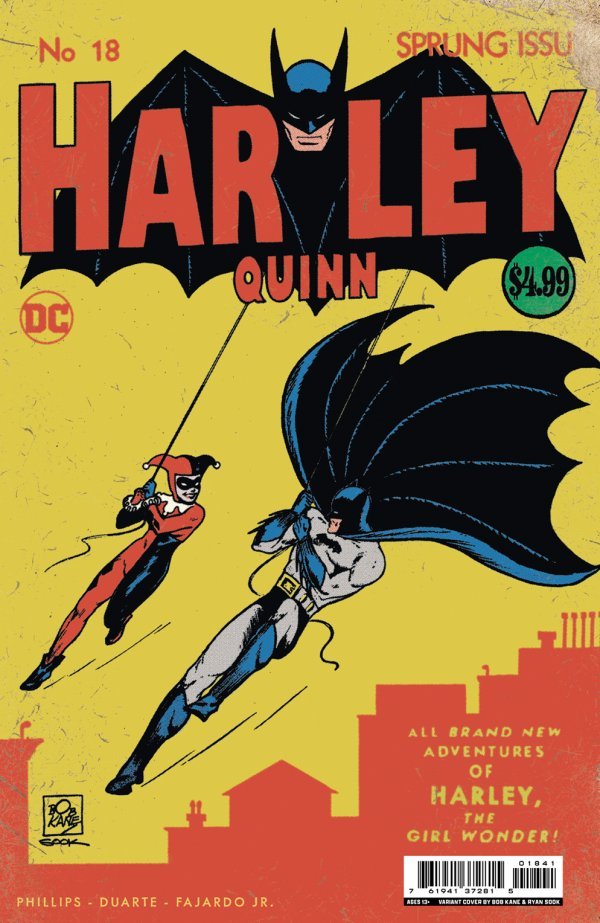
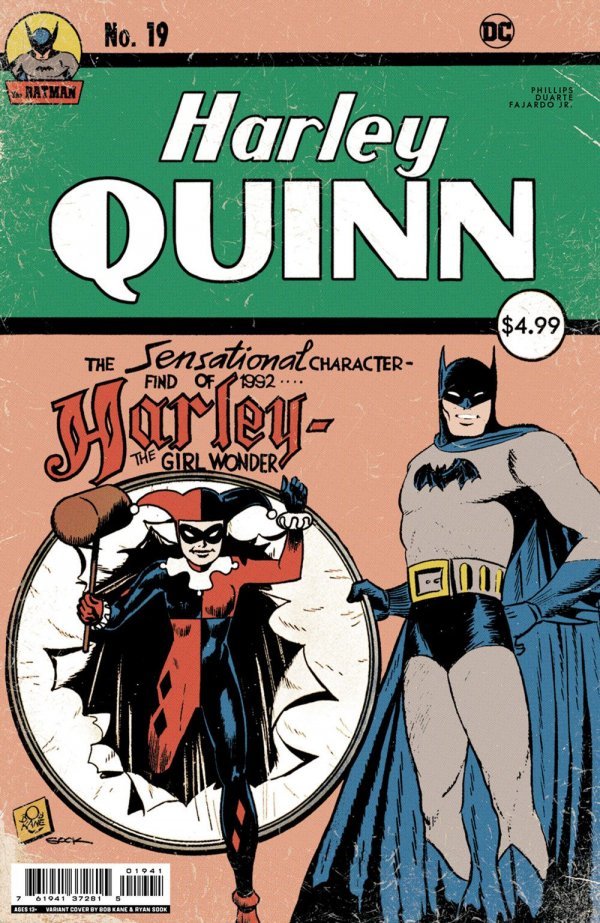
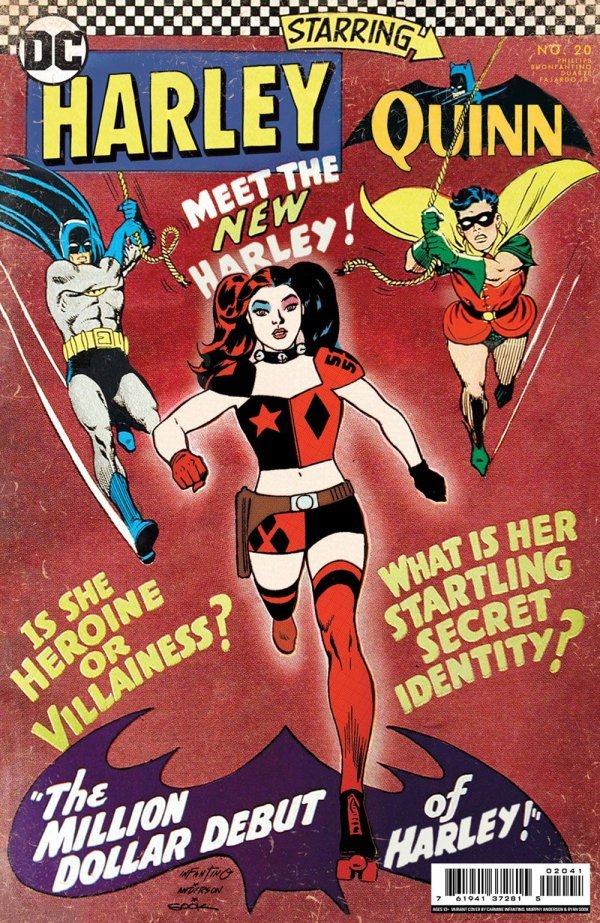
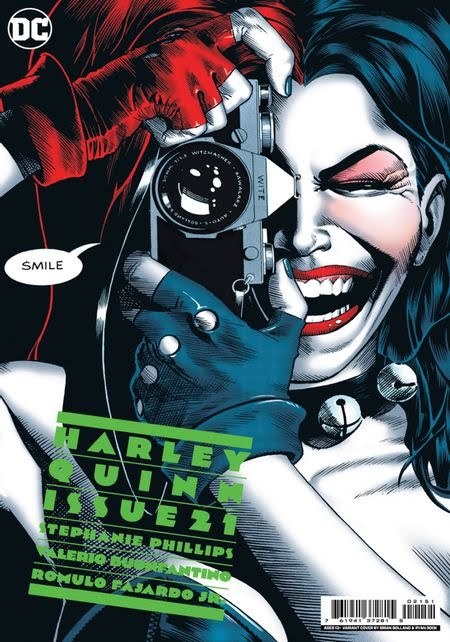
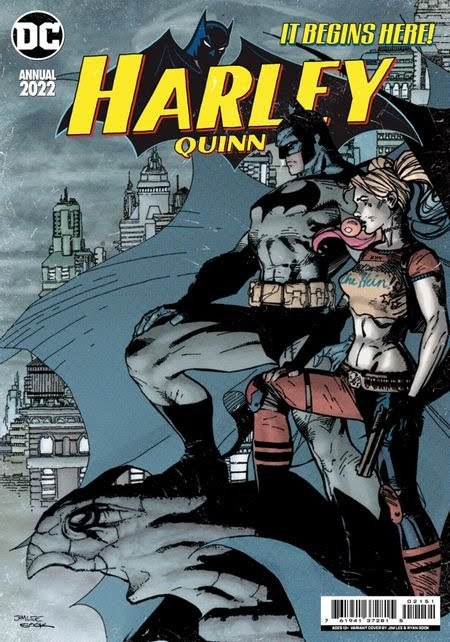
Harley Quinn (2021 - ) #18 | Cover C Ryan Sook Homage Card Stock Variant • Batman (1940 - 2011) #1 Cover by Bob Kane and Jerry Robinson
Harley Quinn (2021 - ) #19 Ryan Sook Homage Variant • Detective Comics #38 by Bob Kane & Jerry Robinson
Harley Quinn (2021 - ) #20 Ryan Sook Homage Variant • Detective Comics (1937 - ) #359 Cover by Carmine Infantino, Murphy Anderson, Ira Schnapp
Harley Quinn (2021 - ) #21 Ryan Sook Homage Variant • Batman: The Killing Joke (1988) Cover by Brian Bolland, Richard Bruning
Harley Quinn 2022 Annual #1 Ryan Sook Homage Variant • Batman (1940 - 2011) #608 Cover by Jim Lee
154 notes
·
View notes
Photo

Joker from The Killing Joke cover by Brian Bolland and Richard Bruning
6 notes
·
View notes
Text

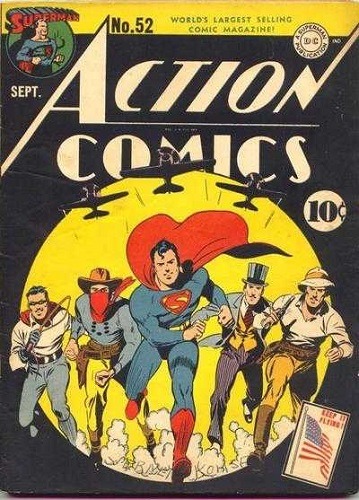

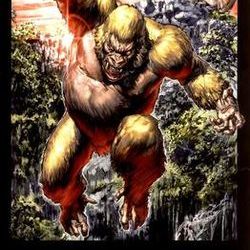
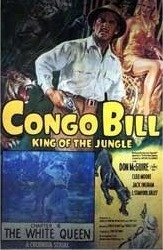
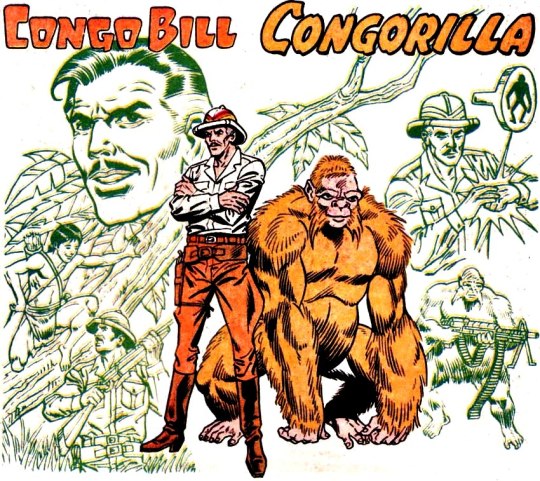
Happy 80th to Congo Bill/Congorilla!
#dc comics#80th anniversary#congo bill#congorilla#chuck patton#mauro cascioli#brian bolland#richard corben#fred ray#neil vokes
13 notes
·
View notes
Text
Saturday 27 June 1835
8 ¾
11 40
no kiss finish but dullish morning - F52° at 9 25 am Breakfast at 9 ½ - had Washington - he said Ward the blacksmith would not do to have the shooting over the estate - would lead him to drink and neglect his business - young Hinscliffe more yellow than his father - nothing could be made of him - recommended William Pearson of Hoyle house - a steady man - gave a blue vote the last election - my cottage tenants to pay their rent to Washington at the Black horse from 12 to 2 pm every 2nd Saturday in July and January - finished my breakfast after SW- went - A- had Mrs Fitton who staid till 11 - came to beg for her brother Richard Woodhead to be taken into employing again - turned off sometime back for going off one afternoon drinking - he is to come and make an apology and if taken on again it is all to be laid on A- out at 11 in the barn and stabling - 2 masons (no boy today) at the far cow house had begun the walling off from the barn - Robert S- and his man Joseph Sharpe helping the masons and carrying out rubbish - Charles and James H- and Carter as yesterday and Thursday at the roof of Hopkins’ barn - note in pencil (in the far cow house) to Mr Parker and gave it to William Green desiring Mr P- to pay him £5 on account of the cottage and put it to the cottage account - Mark and his son Richard Hepworth brought 2 loads of larches from Southolm wood, the last of them, there being Richard said about 106 trees in all - Had Joseph Mann and paid him for the cart fortnight - then paid Mark for carting wood and for the keep and care of the great bay horse I bought of Briggs at Tadcaster - Mark asked if I should think a shilling a week too much (for the 7 or 8 weeks from 23 April) for the horse had done bits of jobs for them - I said no! and gave him a sovereign remembering that I had paid Thomas Pearson 8/6 a week for his keep of Mr Hall’s gin-mare - then sat sometime with my aunt in the drawing room - then saw A- off on her pony to Cliff hill at 2 20 and afterwards till 6 ¼ with Robert S- siding the cowhouse and from 4 to 6 with John Booth in Trough of Bolland wood taking up and replanting there young oaks likely to be covered over by the stuff to be moved for the Lodge - paid the men - A- had Washington - he had paid Pickells £12 on account of carting stuff from Walker pit - he (W-) advised me not to think of taking the land off Pickells’s hands as he had above £100 in it -had covered it 3inch thick with manure! said I had given up all thought of taking the land before the time came (next February) - dinner at 6 50 - coffee - sometime with my father and Marian then wrote the above of today till 9 ½ - then tea - ¼ hour with my aunt till 10 ¼- then at weeks accounts till 11 40 - finish day - a little rain in the course of the morning and heavyish shower between 4 and 4pm - F53 ½° now at 10 ¾ pm
3 notes
·
View notes
Text
A SHORT HISTORY OF FEMALE JUDGES IN JUDGE DREDD FROM 2004 TO 2007

With a sense of newfound stability and confidence brought about by finally being owned by a company that genuinely cared for its characters and stories, 2000AD carried onwards into the new millennium, with John Wagner leading Dredd into a new epic and setting him off on the road to a storyline that would redefine both character and setting forever. One particular staple of this era is the solidification of the strip as a very character-driven, procedural crime drama, building even further on the lessons learned from “The Pit” but also adding a deeper layer of examination of the strip’s protagonist and his relationships with his supporting cast.
Unfortunately, said supporting cast is still running a bit low in the female judges department, although that doesn’t really put a dent on female protagonism in general, as Dredd’s niece Vienna takes a much more center stage. And although Chief Judge Hershey likewise remains a regular fixture, it’ll still take a few more years for Wagner to introduce a new female judge with any real lasting power. In the meantime, however, a new generation of writers and artists will begin introducing several new female judges in a variety of roles, from background extras to one-thrill wonders and maybe even villains...
(Previous posts: 1979 to 1982 - 1982 to 1986 - 1986 to 1990 - 1990 to 1993 - 1993 to 1995 - 1995 to 1998 - 1998 to 2001 - 2001 to 2004. All stories written by John Wagner unless noted otherwise. Cover art by Henry Flint)
Our first stop is “Terror”, painted by Colin MacNeil and published in progs 1392-1399 (June-July 2004). A prologue to the upcoming mini-epic of the year, it heavily features a Judge Stuyvesant as part of a small task force of judges investigating the extremist democratic terrorist group Total War. Sporting her own variant on the black bobcut, Stuyvesant runs surveillance on a suspected Total War operative as he falls hopelessly in love with a citizen, acting as a secret bridge of sorts between them and Dredd, and saving the latter from having to spend hours looking at monitors.
Right after the last episode of “Terror” comes “Big Deal at Drekk City”, drawn by Cam Kennedy (progs 1400-1404, August ’04), where Dredd and a Judge Vance take a handful of cadets, including a very aptly-named Cadet Laws on a rather troubled Cursed Earth familiarization trip. Vance proves to be an experienced judge, not just in combat but also at testing the cadets’ attitude, but at the story’s climax she takes a spear to the chest and comes extremely close to dying. Luckily for her, the cadets overturn Dredd’s orders to stay back and return to save both of them, with Laws taking care of her injuries. So a decent outing, all things considered.

And so we get to the first big thrill of this post, the 12-episodes long “Total War”, drawn by Henry Flint and published in progs 1408 to 1419 (September-December ’04). This is also Chief Judge Hershey’s first city-wide crisis in office, as both “Helter Skelter” and the Aliens invasion were events mostly isolated to one or two sectors. The threat itself comes from an alleged two hundred nuclear explosives secretly placed around the city by Total War, the afore-introduced terrorist group. Their demands are simple: all judges must turn in their badges and surrender their power to the public, or they will begin detonating the bombs at regular intervals until they accept or the city has been reduced to glowing dust.
With a clear (albeit hidden) enemy and the tense, gripping pace of a good Tom Clancy novel, “Total War” has little room for character development, and most of it is taken by a subplot involving Dredd, Vienna and a genetically-altered clone. The impersonal nature of the threat also means there’s not much in the way of gunplay or fight scenes, with most of the action being a race against the clock for Dredd and a team of investigators to locate and dispose of the nukes. One thing we do get to see, however, is Hershey at her best as Chief Judge: unfettered, collected and focused, but also willing to resort to certain tactics that many of her predecessors would’ve found difficult to stomach. The most obvious case being the opening page of episode 7, where in a citywide broadcast she concedes to Total War’s demands and orders the immediate disbanding of the judges and a return to a civilian government.

Naturally, it’s all a ruse designed to buy more time as Dredd and company desperately chase every possible lead and exhaust every resource to find the bombs, and to Hershey’s credit it works like a spell. Chief of Undercover Division Judge Hollister also makes an appearance, as does Judge Stuyvesant from a few months back, and it’s actually pretty interesting to see how Flint manages to give the latter’s design a few unique qualities to differentiate her from her chief.

A few female undercover judges, an unnamed bespectacled control judge and a fairly striking PSU judge also make small appearances, and once the crisis is over we get a short and somewhat odd scene where Dredd tries to hand over his badge for racing to save an endangered Vienna from the devastation of a nuclear blast instead of protecting the citizens, but Hershey downplays his perceived dereliction of duty and reminds him that he’s still human. It’s rather strange and almost out of place at the end of a story where her stoicism reached almost robotic heights, but it does make a good job of showing the personal bond that still exists between them. And at any rate, it’s worth it to see her turn Dredd’s catchphrase against him.

By way of intermission, the special prog 2005′s “Christmas with the Blints” (Andrew Currie, January ‘05) has Dredd travelling to Brit-Cit hot on the trail of a married couple of serial killers, which nets us a couple of background female brit judges in a few panels. Then it’s back to the Big Meg for a handful of epilogue stories dealing with the fallout of Total War’s terrorist attack. “After the Bombs” (Jason Brashill, 1420-1422, idem) has yet another appearance by Stuyvesant; “Horror in Emergency Camp 4″ (D’Israeli, 1425-1428, February ‘05) has a quite staggering amount of possible background female street judges, including two named ones called Rush and Woo and a very librarian-like PSU judge; and “Missing in Action” (written by Gordon Rennie and drawn by Ian Gibson, 1429-1431, March ‘05) has not only a young Judge Herriman as a small plot point, but also a very odd female judge with dual straight shoulderpads, platinum blonde hair and a Justice Dept. branded hairband who may be a psi (Anderson, even?), although it’s hard to tell because the badge looks like a regular street judge’s.

(The one liberty Justice Dept. hasn’t crushed: artistic liberties!)
EDIT: via Facebook, Gibson himself has confirmed the judge pictured here is indeed a regular street judge. He also had a few comments about the design:
"Returning to the ‘uniform’ topic, for some reason that now escapes me, I decided to give the female judge from the Missing in action adventure a Justice department head scarf. I think it suits her and makes her less scary for the little girl they rescue.”

Speaking of Psis, a slightly redesigned Judge Karyn reappears in progs 1432-1436’s “Descent” (by Rennie and Boo Cook, April ‘05) with a new pink hairstyle and a psi-flash that leads her and Dredd into the Undercity to rescue some survivors of a hovership crash through the hole left by one of Total War’s bombs. Unfortunately, what they find there is a supernatural entity known as the Shadow King, which Dredd and Karyn had already fought in the Megazine (volume 4, issue 5). In the ensuing firefight, Dredd is possessed by the Shadow King’s spirit and turns into a hulking monstrosity, and Karyn takes her whole “Anderson wannabe” character trait to its logical conclusion by knocking Dredd out and absorbing the spirit into herself. Unfortunately, the Shadow King turns out to be too powerful for Karyn, and ends up destroying her mind and taking over her body. She’s eventually subdued by Dredd and judge reinforcements, and the creature once known as Judge Karyn is locked inside a holding cell deep inside Psi Division’s headquarters, never to escape.

It’s a move somewhat reminiscent of Garth Ennis’ treatment of Judge Perrier or Dekker: bring an obscure character back from the depths of oblivion, use them as supporting cast for a couple of years, then kill ‘em off at a later date. And it can definitely be read as a fairly manipulative attempt at getting some emotion out of disposable characters by offing recognizable names rather than complete nobodies. However, the difference between them and Karyn to me lies in Rennie’s very meta-textual idea of her chasing after Anderson’s star. Karyn, much like Janus, was created as a reserve Anderson and swiftly put aside once she returned. They both have their fans, sure, but the general consensus is that try as they might, they just couldn’t match up to the original. Which is exactly what happens to Karyn in this story. She tries to be Anderson but ultimately isn’t as strong as her, and ends up literally erased as a result. It’s still a very heroic sacrifice, as she dies saving Dredd, but it also has a deeper narrative core that was missing from pretty much every other revival of old, forgotten judges.

Rennie sticks around to write the much longer “Blood Trails” (art by Currie, progs 1440-1449, May-July ‘05), which is his own take on the Wagnerian procedural cop show-style mini-epic. As such it features a nice couple of female background judges (only one gets a name: Weisak), including a surprise cameo by Judge Morinta, the inventor med-judge from “Gulag”, although for some reason she’s now blonde instead of brunette. And of course, there’s the by now mandatory final page visit to Hershey’s office, this time to orchestrate a covert retaliatory orbital strike against Anatoli Kazan, War Marshall Kazan’s clone (also introduced in “Gulag”), for siccing a bunch of assassins on Dredd’s niece. Needless to say, it gets carried out quite swiftly.
A few weeks later, Carlos Ezquerra draws another background female judge in “Matters of Life and Death”, also by Rennie (1452, August ‘05). Wagner returns with artist Kev Walker in tow to deliver “Mandroid” (1453-1464, August-November ‘05), and although the main female character in that story is not really a judge, there are still a few proper ones scattered throughout, including a Judge Kowalski who gets a tender little background moment in what’s otherwise one of the absolute bleakest stories of the decade.

Right afterwards, we get a Tek Judge James in prog 1465′s “Everything In The Garden” (Arthur Ranson, November ‘05). Then Rennie and Flint return for a small epilogue to “Blood Trails”, as Anatoli Kazan, now hunted by his own government, arrives in Mega-City One requesting political asylum in “Change of Loyalties” (1466, November ‘05). Of course, Dredd’s having none of it, but since Anatoli could potentially be an invaluable tactical resource and a goldmine of intel, Hershey asks him to at least talk to the creep before calling for his execution. So what we’ve got here is maybe the first example of the main conflict between Dredd and Hershey, one that continues literally to this day in stories like “Harvey”.

(Also of note: this Brendan McCarthy-esque coloring job by Flint. Talk about seeing red!)
On this corner we have the immovable object: Judge Dredd, with a mindset as narrow as his helmet’s visor, never one to double-think himself or back down, apt to following both his sharp gut instincts and his Everestian mountains of experience, and usually very, very right. On the other, we have the irresistible force: Chief Judge Hershey, focused on the big picture, willing to take a chance on a potentially risky idea that could also bring about huge benefits to her city, confident that they’ll be able to handle whatever pitfalls may appear later on, but willing to listen to all parties involved. That last part is important because with any other chief this is the kind of conflict that would lead to some serious fallout, but Hershey is smarter than that, and more importantly, has seen first-hand what happens to Chiefs who don’t listen to Dredd. Her default way, then, of bridging the gap between the two forces is to plainly ask Dredd his opinion and promise to act accordingly to it, in this case, by letting him decide her vote on the council.
Overall it’s a decent way to avoid some very cliche drama, but there’s a couple of problems with it, not least of all that the sheer number of stories like this has turned it into a cliche in and of itself. However, the biggest problem, for me, is that it reduces Hershey to a bit of an echo chamber or political proxy for Dredd, allowing him to make decisions and direct the course of the city without actually leaving his position as a street judge. It lets him play in both arenas at once but doesn’t chain him to anything. From an in-story perspective it makes sense, since despite everything they still have a history together and Dredd is rarely wrong, but it’s annoying from a character standpoint because it stifles Hershey quite a bit. At its worst, she comes off as just a puppet of Dredd’s, although her directly asking for his council and seemingly agreeing with it on some level helps stave that off. And in a sneaky bit of storytelling, when the council does make its decision on Anatoli’s fate we get to see the result but we don’t get to see who actually voted for what. So whether Hershey actually went through with her promise is left, much like the voting hands, up in the air.

Rounding up 2005 we have a forensic judge at the start of “Nobody”, by Robbie Morrison and Richard Elson (1467, November). The new year then kicks off with a nice handful of background judges through “Your Beating Heart”, by Wagner and Patrick Goddard (1469-1474, January-February ‘06) and the return of Judge Lola in Ian Edginton and D’Israeli’s “Time and Again” (1475, February ‘06), which makes sense considering it’s a sequel to “Tempus Fugitive”. The same story also features an elderly, unnamed scarred female judge as head of a parole board.
Things get a little more exciting in our next stop, with newcomer writer Simon Spurrier, artist Laurence Campbell and (awesomely-named) inker Kris Justice’s “Dominoes” (1482, April ‘06), a story that plants some seeds that would take six years to blossom.

(This is also the first time an artist draws the oversized chains holding Hershey’s badge far as I've been able to gleam, which means I owe Campbell a drink because it’s my absolute favorite detail of her uniform)
Ostensibly, the story is all about Dredd going on a diplomatic mission to Neocuba to handle a prisoner exchange with their president. Two pages in, however, we learn that his ship’s pilot is actually a fanatical black ops agent with a mission of her own: assassinating said president in such a way that it looks like either an accident or a covert sov op. Which she does beautifully and without Dredd ever realizing it. And in a final bit of very sharp writing, Spurrier all but screams she did it all on Hershey’s orders.
Overall, a fair lot to unpack for a six page story. We’ve known for a while now that Hershey favours more subtle, underhanded ways of securing Mega-City One’s interests than blunt force of arms, but something about this one feels like pushing it. Maybe it’s keeping Dredd in the dark about it, or directly targeting a foreign head of state, but if it’s not crossing a line, at the very least it’s toeing it. In a way it echoes "The Chief Judge’s Man”, but having the target be an implicitly corrupt foreign leader makes it slightly less damning than murdering rebellious but innocent MC-1 citizens. And, more importantly, Spurrier decides to end the story without confirming nor denying Hershey’s involvement in it, although at the time it seemed like a sure thing.

From a six-pager to a six-episode-er as Gordon Rennie, Ian Richardson and PJ Holden bring us “House of Pain” (1485-1490, May ‘06), and what a treat it is. Right off the bat we open with Judge Alice, a street judge driving a catch wagon on the graveyard shift, being harassed by a couple of punks. Her scene is mostly set-up for Judge Guthrie’s return, but things get a lot better as the story goes along. First, with a small guest appearance by Wally Chief Judge Hollister going undercover with two others as kneepad models in a pretty funny, albeit pretty skeevy scene; then with Judge Corson, a bomb defusal specialist tek who first helps Dredd deal with a perp’s suicide box implant and later with the main villain’s offshore platform’s self-destruct; and there’s still enough space for Hershey to deliver a short lesson on law economics:

By contrast, “Jumped”, by John Smith and Simon Fraser (1491-1494, June ‘06), only has a lone unhelmeted female judge in a panel, although she is seen with a similarly unhelmeted male judge, so maybe all those fan letters about lady judges being allergic to helmets are finally having an effect. “Neoweirdies”, by Simon Spurrier and Paul Marshall, (1496-1498, July ‘06) has a couple of background sightings but also co-stars a Judge Garris as part of a team investigating murders in a pretentious weirdos competition, including a cheeky little panel of her checking out a naked contestant. Avert your eyes, lest the SJS pluck ‘em out. Spurrier also writes the Pete Doherty-drawn “Versus” (1499, August ‘06), a mostly silent tale featuring a female control judge.

Now we reach what’s probably the most important and certainly the longest story of the decade: “Origins”, by Wagner and Ezquerra (progs 1505 to 1535 -with interludes- September ‘06 to May ‘07). The premise is a heavy one: Justice Department receives a note demanding a ransom for the corpse of Judge Fargo, creator of the judge system and father of justice. With the note is a tissue sample that was taken from a living organism, so if it is indeed Fargo, he’s also alive. Chief Judge Hershey quickly sends Dredd and a team of hand-picked judges into the Cursed Earth with one billion credits and a wagon to follow the trail of the kidnappers. The team includes two female judges: the returning Judge Sanchez from “Incubus” and a Judge Waters. Of the two, Waters is definitely the most impressive, a hardened street judge who acts as Dredd’s second in command early on, leading a defensive action against an army of Mad Max extras with a very calm, matter-of-fact badass attitude that feels quite refreshing after years of more troubled, insecure judges. It also helps that Ezquerra draws her as noticeably older than Sanchez, so it’s clear from the get-go that Waters is a veteran. And near the end of the story, Waters gets another chance to shine as she orchestrates and executes the rescue of Dredd and Fargo from the renegade army of the damned. Overall, she proves herself more than worthy of being in a Brian Bolland cover.

Of course, as the name suggests, “Origins” is mostly concerned with showing the birth of the Justice Department and the events leading to Dredd’s creation, so there’s not much else there that concerns this post, save for one small but crucial page: when the young Fargo is outlining his plans for the creation of a corps of judges armed with the power to dispense instant justice to the United States senate, he specifically mentions the need for choosing “good men and women.” And on the same page we get a glimpse of an early class of judge cadets in training which also includes a couple of women. So here is confirmation that from day one the judges counted several women in their ranks, although admittedly by now this probably wasn’t terribly in doubt.
The final episode also has a predictable appearance by Hershey, who gets the unexpected privilege of being the second to last person to talk to Fargo before he finally expires. The last one, naturally, is Dredd himself, although both of them lie through their teeth about what his final words to each other were. More on that later.

Now, about those interludes. Prog 1521′s “The Sexmek Slasher” (January ‘07) by Wagner and Vince Locke features a Judge Wyler in a supporting role. And Gordon Rennie teams-up with Ian Gibson to bring us “Judgement” (1523-1528, February-March ‘07), a supernatural revenge story guest-starring Judge Anderson in one of her rare not-Grant/Wagner-scripted appearances.

(Also featuring the return of Teddy Dredd!)
The story is a tightly-written tale about a ghost judge murdering members of a crime cartel known for using psykers to mask their activities. The revenant also murders a judge but spares his partner, a Judge Bunns (could it be the same Bunns from 1983′s “Rumble in the Jungle”?), demonstrating some kind of psychic ability to tell the guilty from the innocent, although how innocent a Mega-City One judge can really be is anyone’s guess. Dredd and Anderson’s investigation reveals that the ghost is actually the enraged soul of a long-dead judge, killed by Rico Dredd before he was sent to Titan. But it’s Anderson who connects the final dot and reaches the real source of the apparition: Judge Edek, a veteran psi-judge ambushed and all but murdered by the aforementioned cartel. Crippled beyond repair and frozen in cryo-stasis in the hopes that some day technology would advance enough to heal her, some part of Edek’s consciousness remained, well, conscious, and reached out in anger to another betrayed judge in order to turn them into a revenant and get her revenge. Ultimately, Anderson reaches Edek’s chamber after fighting her way through a gorgeously drawn horde of ectoplasmic monsters and pulls the plug, while Dredd handles what remains of Judgement on his own.

Overall, “Judgement” is a very strong showing for Anderson and a great psychic/supernatural twist on the old “judge turned vigilante” premise of stories like “The Executioner” or “Raider.” Also on display is Gibson’s slight redesign of the psi judge uniform, as Anderson sports twin straight shoulderpads all the way through. According to Gibson himself, the pads helped him make her more “dynamic.” He also had a spot of trouble rendering Anderson’s new shorter haircut, first shown in Alan Grant and Arthur Ranson’s ongoing Psi Division strip in the Megazine. In his own words:
"Then, when I was back doing a Dredd for 2000ad, on a story called ‘Judgement’ ( I think ), Andy was again in the script. But someone had cut off all her lovely flowing blonde tresses, for reasons of their own. So I had to render her thus.”
Rounding up this post we have a trio of short done-in-ones: “Fifty-Year Man” (Wagner and Patrick Goddard, prog 1536, May ‘07) has a female judge, perhaps a public relations administrator, as head of a team putting together a retrospective of Dredd’s fifty years on the streets, with some predictably disastrous results. In a similar vein, a journalist is arrested by a Judge Socks (maybe, her badge is hard to read) after going insane trying to write a biography of Dredd in “The Biographer”, Rob Williams’ first appearance in this project (with Boo Cook, 1537, idem). And we end in a note of tragedy with “The Incident”, by Robbie Morrison and Richard Elson (1538, idem). The story kicks off when undercover Judge Ferrara has her cover blown and is kidnapped by assassins who use a nano-virus to destroy the high tech implant wire on her brain that she’d being using to spy on their boss. Unfortunately for her, both PSU and Dredd are too slow to reach her, and the virus erases her mind. One seriously bleak story, although we do get to see Elson draw some seriously unique uniforms for the Control judges:

In our next episode: the hardest part to write for me. Also, the most important female judge of the new millennium has her prog debut.
#2000AD#Judge Dredd#Female Judges#John Wagner#Gordon Rennie#Robbie Morrison#Ian Edginton#Simon Spurrier#John Smith#Henry Flint#Ian Gibson#Boo Cook#Kev Walker#Laurence Cambpell#(my hero)#PJ Holden#Brian Bolland#Carlos Ezquerra#Richard Elson#Judge Hershey#Judge Anderson#Judge Karyn#Judge Stuyvesant#Judge Hollister#Judge Corson#Judge Waters
21 notes
·
View notes
Text
1833 Fri. 22 March
7 25/.. 11 35/.. + L L soft morning Fahrenheit 46 1/4º at 7 25/.. and 39 1/2º at 8 1/4 outside my window - breakfast with my father at 8 3/4 in 35 minutes - till 10 1/4 settling my account with Cordingley - then with my aunt till 11 - then 1/2 hour writing out last 3 letters in business letter book volume 2 - from 11 35/.. to 12 3/4 (interrupted 10 minutes speaking to James Jowitt of High Sunderland) wrote 3 pp. [pages] and ends to Mrs. Norcliffe - chit chat - had she not been so good as ask me to write soon, should have waited a little longer to fix, or, at least, propose the day for being with her at Langton - but on this subject will write again - hope to be at Langton before the end of next month - anxious to hear how Mrs. Best - hear from M- [Mariana] she is out of danger - have thought of her and Mrs. N- [Norcliffe] perpetually
'I really feel for you, my dear Mrs. Norcliffe, very much, and shall not be quite comfortable without hearing of or from you, in the course of a few days - I need not say, that my anxiety, and gratitude, and regard, towards you, and yours, for all the never failing kindness I have received, are too deeply rooted to be easily torn up - From the moment I saw my being here must be prolonged, I determined, if possible, to see you again, and if you are not tired of me, I shall not limit my stay to a few days' -
Inquires after them all - mention M- [Mariana] having had Mrs. Chaloner for a fortnight and the Sympsons being at Leamington - surely IN- [Isabella Norcliffe] will be at home by the end of next month - if not, always so happy at Croft, it would be too selfish in me to wish to hurry her back - dare not read MacGregor's Canada for fear of longing to go there - 'tho' rather cured by various concerns at home, have not yet forgot my old propensity for wandering - having given up Italy for the present - the hot months there would not do - shall hope to profit by Norcliffe's experience - shall decide nothing till in Paris
- from 12 3/4 to 3 3/4 wrote 1 3/4 page to Breadalbane MacL- [MacLean] and then, wanting to find when I wrote and what I wrote last, unable to find it, took up my journal book and made out index from the beginning of this volume 12 January up to 25th ultimo inclusive the day before sending, and the very day of writing last letter to her and made out letter index from 13 January up to day inclusive - then 10 minutes by the upper kitchen fire to warm myself (winterly day - flying showers of small snow or light hail or rain) and out at 4 1/2 having left my letter to Breadalbane MacL- [MacLean] thinking, after seeing what I wrote so lately, it useless to put to the expense of postage just now for mere thanks of which she is assured especially having written to their agent to acknowledge the receipt of the plants -
Some time with John just finishing dressing up the hedge all along the top of trough of Bolland wood - then stood a long while with Pickels having cut more than 1/2 way along the far Bairstow my new road - (settled with my aunt and Marian today to call it Whiskam road) then took a turn or 2 to the end of my walk (a heavyish snow shower for some minutes while there that whitened all around) and came in at 6 3/4 - dinner at 7 5/.. - afterwards reading the article on minerals in Sir Richard Phillip's million of facts - a little nap and went into the other room at 9 3/4 - Letter from Hammersleys to say they had written to order the payment of £5 to Mrs. Tiler -
Very kind letter 3 pp. [pages] from Breadalbane Maclean (Coll house) telling me all about the girls and Mr. Robertsons brain fever and consequent necessity of being now under restraint - wonders if the Retreat near York would be advisable for him - shall offer to make inquiries - says she hears from Mrs. Cameron that V- [Vere] is to be confined in June - encloses letter from her Russian friend (vide 13. 54.) with information for my journey to Saint Petersburg and saying he had written me letters and sent them under cover to Lord Goderich - but for fear of some mistake in their being forwarded to me begged me to write and ask Lady Stuart to inquire about them for me - read over the courier - came upstairs at 10 35/.. - winterly snow-showery day - rain, and sleet, and small snow, and between 6 and 7 regular snow shower large flakes - Fahrenheit 45º now at 10 3/4 -
2 notes
·
View notes
Text
Arthurian comics list
An amazing website on arthurian comics already exists (Camelot in Four Colors) so you might find there comics that I didn’t add to this list. You might find some overlapping because, well, arthurian comics are arthurian comics, but hopefully you can find new information in this list, especially because Camelot in Four Colors stopped updating in 2015.
The list is divided in comics, Connecticut Yankee comics and, at the end, some famous comics with just some arthurian characters/themes in it, but not specifically about King Arthur.
Comics are in chronological order, the number of issues is the numbers at the moment. For many comics, it’s not clear if they will ever be continued, so I didn’t add the “ongoing” status.
Arthurian comics
2020 Once & Future (Gillen) - 6 issues 2019 Minagoroshi no Arthur (Koga) - 2 issues 2019 Gangs of Camelot (Lawdog) - ? issues 2018 Gawain: An arthurian romance (Sigune) - wecomic 2017 Nimue (Zellers) - 1 issue 2017 The Once and Future Queen (Knave) - 2 issues 2017 Yvain, The Knight of the Lion (Anderson, Offermann) - 1 issue 2017 Unholy Grail (Bunn, Colak, Santaolalla) - 5 issues 2017 Gawain and the Green Knight (Emily Cheeseman) - webcomic + 1 issue to buy 2017 Immortal Brothers: The Tale of the Green Knight (Lente, Henry and Larosa) - 1 issue 2017 Kin'iro no Mabinogion: Arthur Ou no Imouto-hime (Yamada) - 4 issues 2017 Pendragon: The Quest for King Arthur (Andy Winter) - 1 issue 2016 Fate/Apocrypha (Higashide) - 8 issues 2016 Morgane (Kansara, Fert) - 1 issue 2016 King Arthur and the Round Table Knights (J. Flores) - webcomic 2015 Kids of the Round Table (Tinnel, Shelton) - 4? issues 2014 Qishi Huanxiang Ye (Vivibear) - 24 issues 2014 Misfits of Avalon (McDonald) - 3 issues 2014 King Arthur and The Knights of the Round Table (Hall, Richards) - 1 issue 2014 Arthur: King of Britains (Fraley) - 5 issues, collected into one 2013 Kakusansei Million Arthur (Fuugetsu Makoto) - 3 issues 2013 Les Druides (Istin, Jigourel, Lamontagne) - 9 issues 2013 Excalibur - Chroniques (Istin, Brion) - 5 issues 2013 Lancelot (Istin, Alexe, Lacquemoire) - 4 issues 2013 Merlin le prophete (Istin, Goux) - 5 issues 2013 Slaine: The Treasures Of Britain (Mills, Power, Tappin) - 1? issue 2012 Calogrenant (Cameron) - webcomic 2012 Nanatsu no Taizai (Suzuki) - 41 issues 2012 Knights of the Living Dead (Wolfe, Higgins) - 6 issues 2012 Dead Future King (Flores, Gilmore) - 4 issues 2011 Mizuumi no Kishi (Winters, Maki) - 1 issue 2011 Trance Knights (Kugayama) - 1 issue 2011 The Coming of the King: Morte d'Arthur (John Matthews and Sweeney) - 1 issue 2011 Excalibur: The Legend of King Arthur (Lee, Hart) - 1 issue 2011 Knights of the Living Dead (Wolfe, Higgins) - 6 issues 2011 Le avventure di re Artù (Stilton) - 1 issue 2010 King Arthur and the Knights of the Round Table (Williams) - 1 issue 2010 Muppet King Arthur (Benjamin, Storck, Alvarez, Silvani) - 4 issues 2010 Lady Pendragon (Hawkins) - a long series, but this 2010 volume collects the start 2010 Fate/Zero (Urobuchi, Shinjirou) - 14 issues 2009 Beyond Avalon (Pruett, Sudzuka, Case, Rieck) - 1 issue? 2009 Arthur: The Legend Continues (Pierro, Zamora) - 3 issues 2008 Caliber (Sarkar, Gastonny, Alexandrov, Velinov) - 5 issues 2008 Frank Bellamy's King Arthur and his Knights: The Complete Adventures - 1 issue 2008 Arthur & Lancelot: The Fight for Camelot (Limke) - 1 issue 2008 Tristan & Isolde: The Warrior and the Princess (Limke) - 1 issue 2007 Avalon High Coronation (Cabot, Coronado) - 3 issues 2007 Dracula vs King Arhtur (A. Beranek, C. Beranek, Moreno, Fotos) - 1 issue 2006 King Arthur: Excalibur Unsheathed (Limke) - 1 issue 2006 Fate/Stay Night (Nihiwaki) - 20 issues 2005 Laz Meridian (Satoru) - 5 issues 2004 Arthur King of Time and Space (Paul Gadzikowski) - webcomic 2004 The Almost Legendary Shannon (Taylor, Yuu) - ? issues 1999 Arthur, une épopée celtique (Chauvel) - 9 issues 1999 Legends of Camelot (Martin, Limke, Trudel et al.) - 5 issues 1998 Le Chant d'Excalibur (Scotch, Melanyn, Hübsch) - 6 issues 1998 Knewts of the Round Table (Fitzgerald, Chamsuwan) - 1 issue? 1998 Merlin (Wood, Alcatena) - 3 issues 1998 Quest For Camelot (from the movie, McCann) - 1 issue 1996 The Once and Future Duck (Rosa) - 1 issue 1994 Il santo Graal (Il giornalino a fumetti) - 1 issue 1993 King Arthur and the Knights of Justice (Golden, Lackey, Wilson, Stein) - 3 issues 1991 Arthur Sex (Aircel comics) - 8 issues 1990 Camelot Eternal (Reed, Reid) - 8 issues 1990 La Quête de la Fille aux Cheveux d'or (Josset, Pommier, Bihel) - 1 issue 1987 Arthur au Royaume de l'Impossible (Duval, Delaby) - 1? issue 1982 Camelot 3000 (Bolland, Wood) - 12 issues 1963 Knights of the Round Table (Dell Comic 1) - 1 issue 1963 Lancelot and Guinevere (from the movie, Movie Classics 310) - 1 issue 1958 La giovinezza di Arturo (Leone, D'antonio) 1937 Prince Valiant (Foster and many other) - still ongoing Unknown date Mickey Mouse and the Knights of the Round Table (Disney Literature Classics 4) - 1 issue
Connecticut Yankee
2014 A Connecticut Yankee in King Arthur's Court (Chwast) - 1 issue 1989 Jankes na dworze króla Artura (Horvath, Ruttkai, Zorad) - 1 issue 1984 A Connecticut Yankee in King Arthur’s Court (Pocket Classics) - 1 issue 1971 A Connecticut Yankee in King Arthur's Court (Classics Illustrated 24) - 1 issue
Appearances
Fables Mage (Matt Wagner) The Brave and the Bold Grimm Fairy Tales De Rode Ridder (The Red Knight) Various DC Comics Hellboy Nobunaga the Fool Vinland Saga MAdame Xanadu in Marvel: in some Iron Man comics and Black Knight comics.
26 notes
·
View notes
Text






“Madness is the Emergency Exit: The Killing Joke’s 35th Anniversary” - One Bad Day:
Bill Finger’s 1951 story "The Man Behind the Red Hood!" showcased the Joker’s origin story for the first time in DC comics. Alan Moore modernized Finger’s classic tale in 1988’s 'Batman: The Killing Joke', illustrated by Brian Bolland (pencils, inks), John Higgins (colors) and Richard Starkings (letters).
After escaping Arkham Asylum and buying an abandoned amusement park, the reader sees a series of flashback sequences of the man Joker was before his transformation; Presented is a man, unnamed, who aspires to become a stand-up comedian, quitting his stable job as an engineer with a young pregnant wife. To his surprise, he fails to bring the laughs as he imagined. Now desperate to support his growing family, he agrees to help two crooks into the plant he used to work in to do an inside job. After agreeing to this crime, the police inform the failed comedian that his wife and baby have died due to an accident. Although he is struck with intense grief, he has no choice but to continue with infiltration of the power plant.
The day of, the two men make him wear a red mask, unknowingly becoming the infamous Red Hood of the criminal underground. Going into the plant, the two men are gunned down and 'Red Hood' is confronted with the Batman. Scared, looking for a way to escape the masked vigilante and all of his life's woes, the man dives into a toxic waste vat with the Dark Knight escaping through the pipe system. Emerging to the surface, removing the red mask, the man has been transformed from the exposure to the deadly chemicals; with chalk white skin, bright green hair and ruby red lips formed in a permanent grin, this clownish new look coupled with the events that happened 24 hour prior drove the unnamed man utterly insane, resulting in the birth of the Clown Prince of Crime, the Joker.✌🏽💜🦇🃏📚
3 notes
·
View notes
Photo


page 11 from Batman: The Killing Joke (1988) by Brian Bolland, John Higgins, Alan Moore and Richard Starkings
43 notes
·
View notes